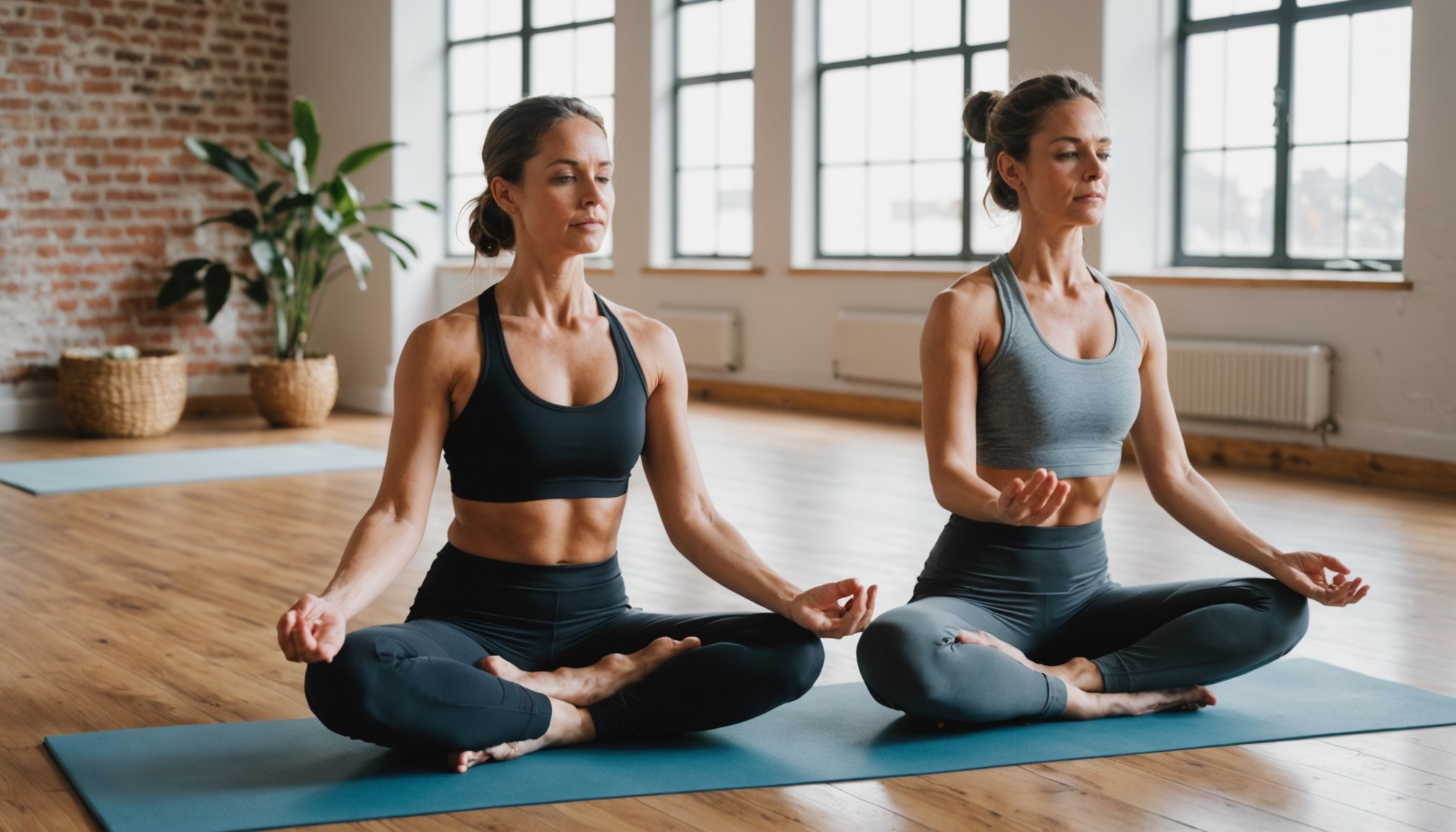Yoga is more than just a series of physical poses; it is a discipline that integrates the body, mind, and spirit. As people increasingly seek holistic approaches to health, yoga emerges as a powerful practice that offers numerous benefits. This article explores the potential health benefits of yoga, especially for beginners, and provides practical advice on how to start your journey safely. Through a blend of studies and expert insights, we will uncover what yoga can do for your body, your mind, and your overall well-being.
Understanding the Benefits of Yoga
Yoga encompasses a variety of poses and breathing techniques that have been shown to significantly improve both physical and mental health. Studies indicate that regular practice can lead to a reduction in stress and anxiety, making it an effective tool for managing everyday pressures. Many people report feeling more relaxed and centered after just a few sessions.
This might interest you : How can you promote mental health awareness in your workplace and create a supportive environment?
The physical benefits are equally impressive. Engaging in yoga can enhance your flexibility, strength, and balance. As you traverse through various poses, you challenge your body in ways that traditional exercises may not. This improved flexibility can also alleviate chronic pain, particularly in areas such as the lower back and neck, which are common trouble spots for many individuals.
Furthermore, yoga promotes breathing techniques that can help regulate your nervous system and reduce feelings of panic or agitation. By focusing on your breath, you can foster a sense of calm that permeates throughout your day. Participants often report enhanced mental clarity and better focus, aiding in productivity both at work and in personal life.
Additional reading : How can you create a calming bedtime routine to improve sleep hygiene and overall health?
In summary, the benefits of yoga extend beyond physical fitness to include emotional stability, pain relief, and an overall enhancement of quality of life. For individuals eager to explore a holistic approach to health, yoga offers a multitude of avenues to improve well-being.
The Science Behind Yoga’s Health Benefits
Research supports many of the claims made about yoga’s positive impact on health. A comprehensive review of studies highlights the relationship between yoga practice and reductions in stress and anxiety levels. One pivotal study demonstrated that individuals who practiced yoga regularly reported lower levels of the stress hormone cortisol, which is often elevated during periods of anxiety.
Moreover, yoga has been shown to benefit individuals with chronic pain conditions. A systematic review published in the Journal of Pain Research highlighted that yoga can significantly reduce pain levels in individuals with lower back pain and arthritis. The gentle movements and stretching involved in yoga help to increase blood flow and mobility in affected areas, often leading to an improved range of motion.
In addition, yoga’s focus on breathing and mindfulness has been linked to enhanced mental health. It encourages individuals to cultivate awareness of their thoughts and feelings, which can help in managing anxiety and depression. Studies have found that individuals who participated in yoga classes reported higher levels of well-being and lower levels of psychological distress, underscoring its therapeutic potential.
Finally, the community aspect of yoga classes provides social support, which is vital for mental health. The shared experience of practicing with others fosters a sense of belonging and connection, contributing positively to emotional wellness. By understanding the scientific basis for these benefits, it becomes easier to appreciate why yoga is a valuable practice for many.
Getting Started with Yoga Safely
Embarking on your yoga journey can be both exciting and daunting, especially if you are new to the practice. To ensure a safe and rewarding experience, it is essential to approach yoga with the right mindset and preparation. First, consider joining a local class with a trained instructor who can guide you through the foundational poses and breathing techniques. This personal attention can help you understand proper alignment, which is crucial for preventing injuries.
Before you begin, it’s wise to consult with a healthcare professional, especially if you have underlying health conditions or previous injuries. They can provide insights into which poses may be beneficial or those you should avoid. As you step onto your mat, remember that yoga is not about competition; it is a personal practice. Allow yourself to be a beginner and give permission to your body to explore its limits without pushing too hard.
Start with beginner-level classes that emphasize foundational poses before progressing to more advanced styles. Focus on basic breathing techniques that calm the mind and body. As you become more comfortable, gradually incorporate more challenging poses and longer sessions into your routine. Listening to your body is vital—if something feels wrong, do not hesitate to modify the pose or skip it altogether.
Finally, create a dedicated space in your home for practice. This area can help cultivate a peaceful atmosphere that encourages mindfulness and relaxation. With the right approach and environment, you will find that yoga can fit seamlessly into your lifestyle.
Common Yoga Poses for Beginners
For those new to yoga, familiarizing yourselves with basic poses is a worthwhile endeavor. Here are some essential poses that can provide a solid foundation for your practice:
-
Downward-Facing Dog (Adho Mukha Svanasana): This pose stretches the entire back and hamstrings while building strength in the arms and legs. It also promotes blood flow to the brain, enhancing focus.
-
Child’s Pose (Balasana): An excellent resting pose, Child’s Pose helps to calm the mind and relieve tension in the back. It is often used to bring awareness to the breath during a session.
-
Warrior I (Virabhadrasana I): This pose builds strength in the legs and opens the chest, promoting confidence. It also aids in improving balance and coordination.
-
Cat-Cow Stretch (Marjaryasana-Bitilasana): A gentle flow between two poses that warms up the spine, improves flexibility, and relieves back tension. It brings attention to the connection between breath and movement.
-
Tree Pose (Vrksasana): This balancing pose enhances stability and concentration while strengthening the legs. It encourages a sense of grounding and inner focus.
-
Seated Forward Bend (Paschimottanasana): A calming pose that stretches the spine and hamstrings, helping to relieve stress and anxiety. It is perfect for cooling down at the end of a session.
Each of these poses offers unique benefits and can easily be modified to suit your comfort level. As you explore these positions, remember that consistency is key. Regular practice will enhance not only your physical abilities but also your mental resilience.
Yoga provides a wealth of health benefits that can enhance your quality of life. From alleviating stress and anxiety to improving physical strength and flexibility, this ancient practice has much to offer. By understanding its potential benefits and how to start safely, you set the stage for a rewarding journey.
As beginners, take the time to learn the basics, listen to your body, and cultivate a practice that feels right for you. With commitment and patience, you will witness the transformative effects of yoga on your mind, body, and spirit. Embrace the opportunity to explore this powerful practice, and let it help you navigate through life with grace and resilience.











